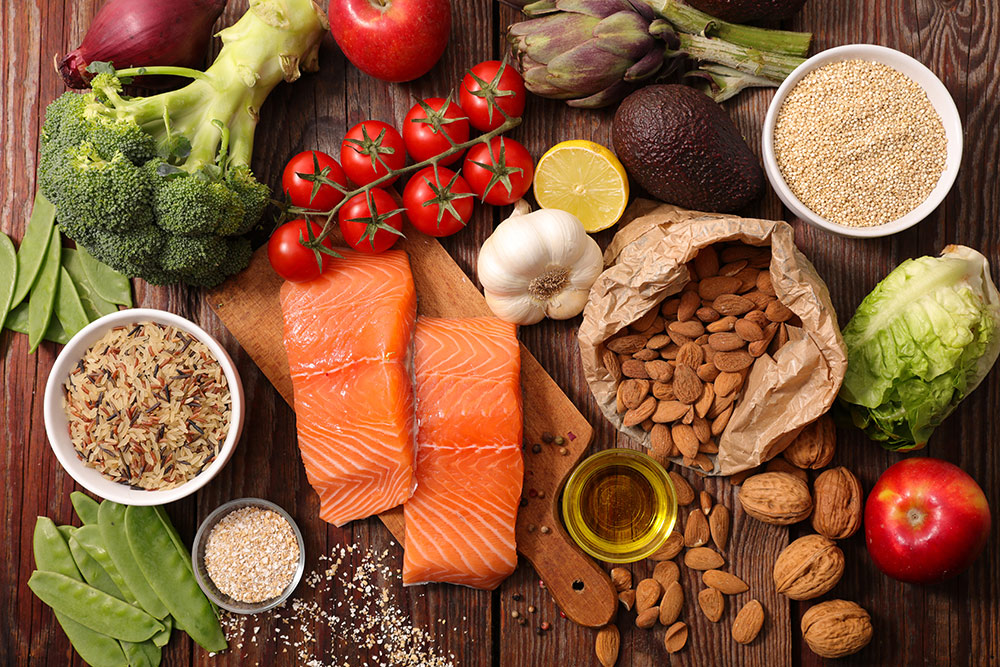Our daily diet is one of the key factors that will affect the wellness of our bodies in the future. For example, a person who likes to eat too many sweets and food rich in sugar will likely develop diabetes in the future. A person whose food preference is salty and meaty dishes will likely have high blood pressure-related ailments and kidney problems in their old age.
Many diseases that develop in old age are most likely a product of environmental and genetic factors. Our daily diet greatly affects our chances of developing ailments in our senior years. This also means that a healthy and well-balanced diet can also reduce the risks of developing diseases that occur due to old age.
One of the most dreaded diseases that occur in elderly years is Alzheimer’s disease. This disease is one of the most common forms of dementia. This disease is characterized by mild memory loss in its earlier stages. It progressively worsens until the affected individual has trouble responding to environmental stimuli because the part of the brain that controls memory, thoughts, and language ability deteriorates. It greatly affects an individual’s ability to carry on with daily activities and interact with people.
Patients diagnosed with this disease also forget several memories, such as the names of their friends or their families, important memories, and different locations they have been in previously. They may also be unable to carry out long conversations and sometimes forget the conversation flow. The disease leaves the patients unable to utilize their thought and memory processes fully.
Like other diseases and ailments that occur in seniors, the risk of developing this disease may be lessened by eating a healthy and well-balanced diet. Here are some of the best types of food that helps with preventing Alzheimer’s or slowing down its deterioration effect to Alzheimer’s senior living patients.
1. Whole Grains
Food that contains whole grains is generally good for the body’s health and digestion. Whole grains contain essential fibers that aid the stomach in digesting food. Better digestion means our bodies absorb more vitamins and minerals, which will greatly improve our internal organs’ functions and wellness. It also helps decrease weight loss for seniors (which could affect overall body health).
Whole grains may be added to a patient’s diet as a part of their breakfast menu. Some cereal brands use whole grains in their ingredients, which can be a good choice for breakfast.
Oats and granola may also be a part of their breakfast menu, and it goes well with milk. Several types of bread have whole grains packed into the dough, such as wheat bread.
These types of breakfast menus can be considered for people with Alzheimer’s disease to incorporate whole grains into their diet.
2. Fruits and Vegetables
Fruits and vegetables are always an important part of a healthy person’s diet since it contains vitamins and minerals essential for maintaining the health of our internal organs. It also provides fibers that aid in digestion.
Eating many fruits and vegetables also helps maintain cholesterol levels and blood pressure, affecting the risks of developing dementia.
Vegetables recommended for patients are green and leafy vegetables such as kale, spinach, and lettuce. These can be added to meals, and they go well with meat and fish.
Salads can also be a great way to add vegetables to a patient’s diet. Fruits can also be added to salads or be turned into fruit shakes for easier consumption and digestion.
3. Lean Meat
Proteins are essential for rebuilding tissues in the body, and meat is one of the best protein sources. Meat also comes with fats, so only lean meat cuts must be included in the diet because fatty meat only increases cholesterol levels.
The best type of meat that comes with less fat is poultry and some beef cuts. One of the common parts used in poultry is the breast since this muscle group contains significantly less fat and more muscle than other parts of the bird.
On the other hand, beef cuts such as tenderloin, sirloin, and ground rounds are among the best cuts that contain less fat and are great for making healthy meat dishes that go well with vegetables.
4. Nuts and Beans
Various nuts and beans are also included in diets given for Alzheimer’s senior living patients. These food groups are rich in proteins and vitamins that are great for brain development and stimulation and are usually served two to three times per week to patients. These are also low in saturated fats, unlike meat, so they are an excellent substitute for protein-rich meat cuts.
Nuts may be provided as snacks in the form of trail mix or added to desserts or dishes. Beans are usually served as side dishes to meat and vegetable dishes and may also be incorporated with main dishes.
5. Fish and Omega-3 Oils
Different types of fish such as mackerel and tuna are excellent sources of Omega-3 oils and good cholesterol. Omega-3 fatty acids are a family of essential oils present in animal products such as fatty fish, meat, and eggs. This contains DHA, an important mineral used by our brain and eyes to maintain their bodily functions.
Fish is also a great substitute for meat to add protein to the patient’s diet. Even if these types of fish contain fat, consuming these are not harmful to the body since it contributes to good cholesterol.
When serving fatty fish such as mackerel and tuna, less oil is needed for frying and pan-searing to avoid excess cholesterol. These may also be cooked by roasting or boiling and are served with vegetables.
Making a difference in your diet as early as your 20’s can make a significant change in the risks of developing ailments that occur later in old age. Always remember that maintaining a healthy body will be very beneficial for your future lifestyle.

